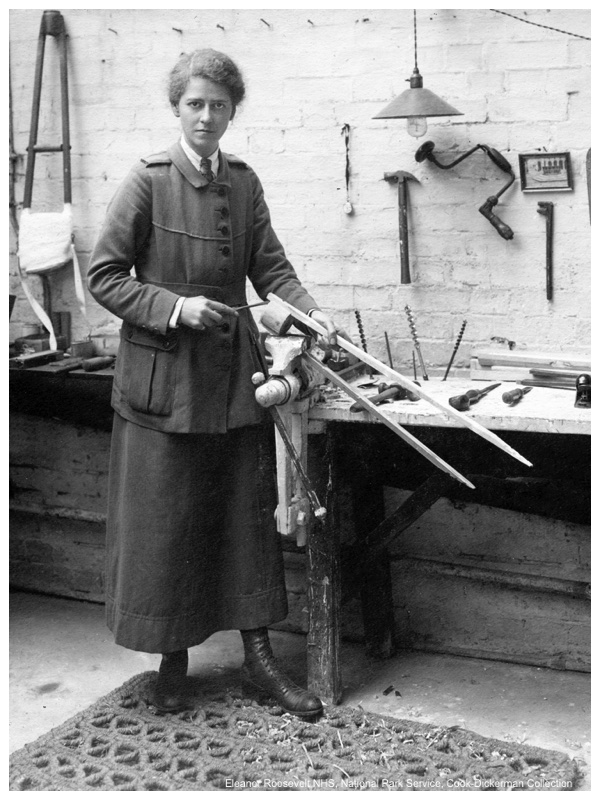Women’s War Work
When war broke out in 1914, women who had been fighting for the vote suspended their campaigns and devoted themselves to the war effort. Two women doctors who had been prominent Suffragettes, Louisa Garrett Anderson and Flora Murray, quickly set up a small hospital unit in Paris.
Despite having no experience of military medicine, they made a success of it, and two months later opened a second hospital on the Channel coast. Favourable reports of their activities reached the War Office and the two women were offered the chance to run a new war hospital in London. Realising that this would enable them to show very publicly that women could do the job as well as men, they accepted and returned to England.
Endell Street Military Hospital
The hospital was to be sited in a large workhouse in Endell Street, Covent Garden. After frantic preparations, the Endell Street Military Hospital, the only British army hospital to have been established and run entirely by women, opened in May 1915. It had nearly 600 beds and a staff of 180. Flora Murray was Doctor-in-Charge; Louisa Garrett Anderson was Chief Surgeon.
Life at the hospital was challenging. Of the doctors, only Murray and Garrett Anderson had any real medical experience of treating patients after qualifying. And as was usual at the time, none of the doctors had treated male patients. Their work was relentless. The fact that Endell Street was near main railway stations meant that it received a high proportion of severely injured soldiers; when convoys of casualties arrived at the hospital, carrying up to 80 men at a time, there could be as many as 30 needing immediate surgery.
Deeds Not Words
While Murray and Garrett Anderson had wanted to do their patriotic duty by contributing to the medical services, their primary aim was to prove that women could do as professional a job as their male colleagues. The staff, many of whom had been active in the suffrage movement, were reminded by Murray: “You not only have got to do a good job, you have got to do a superior job. What would be accepted from a man will not be accepted from a woman. You’ve got to do better.”
A hospital run by women in the centre of London was an extraordinary phenomenon, and reports of Endell Street often appeared in the press. The women met with considerable opposition from the Royal Army Medical Corps, whose general view was that the hospital would fail within six months. In the event, it lasted four and a half years. In that time, over 26,000 patients were treated and over 7,000 surgical operations performed. The women had demonstrated that they were able to run a large military hospital and to deal with complex medical and surgical problems just as competently as their male colleagues.

Credits:
Academic Consultant: Dr Jennian Geddes Producers: Alison Ramsey, Kate Valentine – Digital Drama Rebecca Tremain – The Mustard Club Production Assistant: Layla Gatens Design: Katy Abbott Community Artist: Becci Kenning With thanks to Camden Local Studies and Archives Centre | Culture& Dudley Court Tenants Association | The Hospital Club St Joseph’s Primary School | St Mungo’s
Image credits The Women’s Library, LSE Library Collections* Eleanor Roosevelt NHS, National Park Service, Cook-Dickerman Collection†

